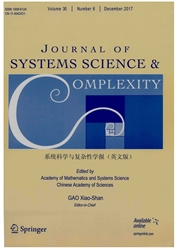

 中文摘要:
中文摘要:
目的 体参数化模型具有诸多优良特性和广泛的应用前景,如何生成有效的体参数化模型是迫切需要解决的问题.方法 首先定义了样条体参数化模型表达式,提出控制点设定是体参数化的核心问题.给定6个表面样条曲面的控制点,从计算域到参数域的调和映射方程的差分形式出发,给出了生成体参数化模型控制点的方法.提出雅克比矩阵和等参网两种方法用以检测体参数化模型的网格质量.结果 基于点云模型,构建了体参数化模型,且将该方法与离散孔斯插值法、凸组合插值法两种方法生成的体参数化模型网格质量进行了对比.结果表明,离散调和函数法生成的体参数化模型相对更为稳定与优化.结论 离散调和映射能初步生成体参数化模型,但需要进一步优化并提供了良好初始化条件.
 英文摘要:
英文摘要:
Objective The volume parametric model has many excellent characteristics and extensive application prospects. Determining the method by which to create the model is an urgent issue to address. Method This study first presents the expression of volume parametric model and proposes the setting of control points as the core issue. After the control points of the six boundary surfaces are presented, a new method for creating the control points of the volume parametric model is presented on the basis of the differential form of harmonic functions from the computational domain to the parameter domain. The Jaeobian matrix and isoparametric network are also presented to assess the quality of the generated volume model. Result A volume parametric model is constructed on the basis of the point cloud model. A detailed comparison is performed between our method and the discreet Coons and convex combinative interpolation methods. Results show that the discreet harmonic function method can obtain a more stable and optimized model compared with other methods. Conclusion Discrete harmonic mapping method can get initial volume parametric model but the model is required to be optimized and has provides a very good basis by using our method.
 同期刊论文项目
同期刊论文项目
 同项目期刊论文
同项目期刊论文
 期刊信息
期刊信息
